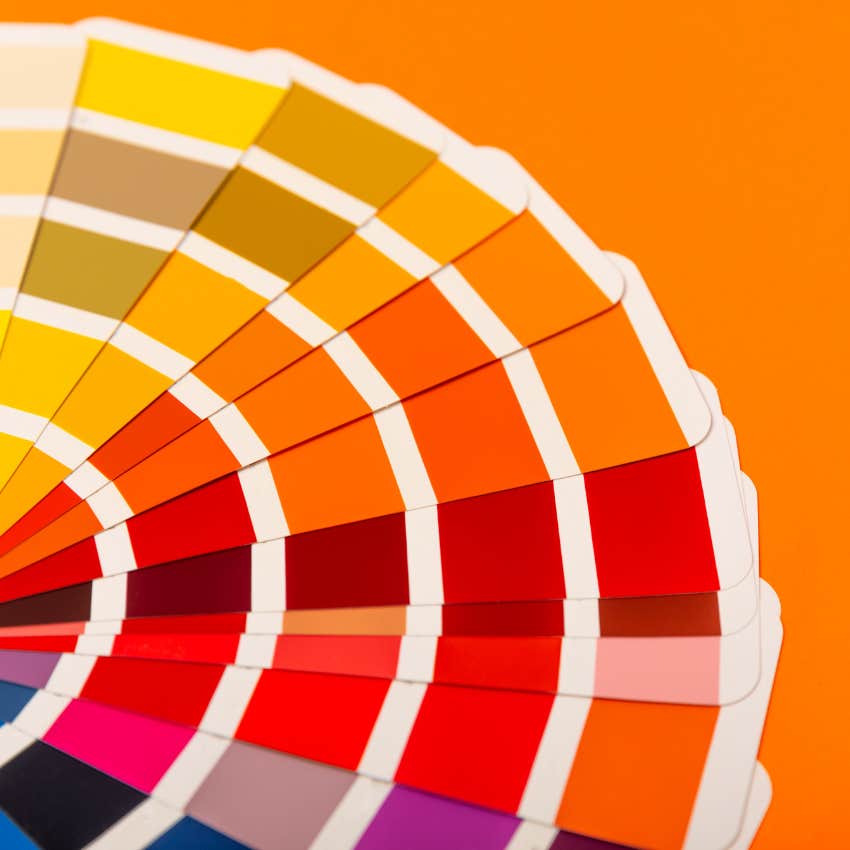It’s Wild How Accurate This Color Quiz Is At Guessing Your Intelligence Level
The results are so spot-on, it's kind of unsettling.
 Zoe Fernandez | Unsplash
Zoe Fernandez | Unsplash The way we see and process information is a key component of how we respond, behave, and perceive the world around us. There are things that our brains automatically process because they are congruent, meaning we already have certain agreements in our minds about them that make sense.
On the other hand, when we come across incongruent things that conflict with one another or are outside of the norm, our brains process these things in a controlled fashion. The test is meant to reveal how quickly your brain processes both congruent and incongruent information. TikToker Cameron Gibson walks us through how to take the quiz.
Known as the Stroop test, the quiz begins by looking at 10 different words and saying the color of the word aloud.
 Avocado_studio / Shutterstock
Avocado_studio / Shutterstock
Gibson reiterates that we are saying the color itself and not reading the word. He clarifies that the words are printed in a color that does not match the name. As an example, Gibson displays the word "green" shown in a red font, and explains that the response should be “red” and not “green.”
Viewers are then instructed to give themselves a point when they get a color correct. First, the word "blue" appears in a yellow font, then "green" in a blue font, "yellow" in a pink font, "orange" in a white font, and so on.
Naming the color instead of the written word sounds simple, but proved to be a difficult task.
It definitely required taking a pause, thereby slowing down the processing speed. In fact, you likely found that separating the font color from the written word did not come naturally.
So what does this all mean? Well, it's actually called the Stroop effect. That delay you experienced between congruent and incongruent stimuli is known as the Stroop effect.
The original Stroop effect theory came as a result of a paper written by John Ridley Stroop in 1935. Stroop tested his theory as far back as the 1800s.
The Stroop experiment consisted of three studies:
Stroop task 1
The first Stroop task was for students to read a word out loud, disregarding the color it was printed in. If the word "red" printed in brown font was shown, the correct response would be “red.” The participants simply read the word as written.
Stroop task 2
In the second task, the students did the opposite, relaying the color of the font and ignoring the actual word written, as Gibson showed in his TikTok video.
Stroop task 3
The third task was slightly more complex. In that one, words were paired with squares in the same color. Participants first called out the color that the square appeared in as a way of training their brains to recognize the words in that same color that followed.
Theories about the Stroop Test results
But how do we explain the Stroop effect and why our brains tend to react this way? Well, there are a few theories used to explain the Stroop effect.
Speed of Processing Theory: This theory is based on the belief that people process written words faster than colors. This makes it hard to identify the color after we read the word.
Selective Attention Theory: The Selective Attention Theory stems from the hypothesis that we automatically sort through information and decide what deserves further attention and processing and what we can ignore.
In relation to the Stroop effect, reading the text requires less attention than identifying the colors. So, our brains take the path of least resistance, opting to process the written words instead of the colors.
Parallel Distributed Processing: This theory offers that our brains create separate pathways for different tasks. Therefore, the strongest pathways are easiest to name quickly.
Automaticity Theory: We each have two types of cognitive processing: automatic and controlled. In the Stroop effect, the brain likely reads the word because we are more accustomed to reading words than we are to recognizing colors.
When taking the Stroop test above, the words become a no-brainer, but when they are combined with a color, an interference occurs in our normal process. This gives us the ability to inhibit our natural answer but requires more time to think.
The incongruence between the text and the color is thought to cause a delay or interference in the brain’s processing speed. This delay is increased in people with mental conditions such as attention-deficit/hyperactivity disorder (ADHD).
NyRee Ausler is a writer from Seattle, Washington, and the author of seven books. She focuses on lifestyle and human interest stories that deliver informative and actionable guidance on interpersonal relationships, enlightenment, and self-discovery.

